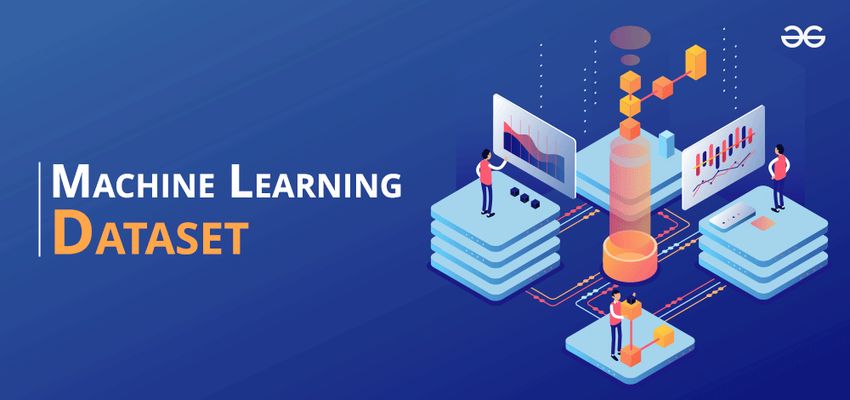Data is the backbone of any artificial intelligence (AI) project. Whether you’re training a machine learning model, building a chatbot, or working on computer vision, high-quality datasets are crucial for success. But where can you find the right data for your project?
In this guide, we’ll explore the best sources for AI datasets, categorized by different AI applications, and provide tips on how to choose the right dataset for your needs.
1. Understanding the Importance of Datasets in AI
AI models learn from data. The better the data, the more accurate and efficient the model will be. Here’s why datasets matter:
- Model Accuracy: More and higher-quality data improves predictions.
- Bias Reduction: A diverse dataset helps avoid biased AI models.
- Generalization: AI needs real-world data to perform well in different scenarios.
- Efficiency: Pre-cleaned datasets save time and effort in data preprocessing.
Now, let’s look at where you can find high-quality datasets for your AI projects.
2. Open Datasets for AI & Machine Learning
a) General AI & Machine Learning Datasets
These repositories provide diverse datasets for training machine learning models:
- Google Dataset Search (Google) – A search engine for open datasets across the web.
- Kaggle Datasets (Kaggle) – A massive collection of datasets across various domains.
- UCI Machine Learning Repository (UCI) – A go-to source for structured datasets.
- Data.gov (Data.gov) – The U.S. government’s open data portal.
- AWS Open Data Registry (AWS) – Cloud-hosted datasets for AI projects.
b) NLP (Natural Language Processing) Datasets
For text-based AI applications like chatbots, sentiment analysis, and text generation:
- Common Crawl (Common Crawl) – A vast dataset of web text and metadata.
- Wikipedia Dumps (Wikipedia) – Raw text from Wikipedia for NLP research.
- Stanford Sentiment Treebank (Stanford) – A labeled dataset for sentiment analysis.
- Open Subtitles (OpenSubtitles) – Subtitle dataset for conversational AI training.
- Hugging Face Datasets (Hugging Face) – Curated datasets for NLP and deep learning.
c) Computer Vision & Image Datasets
For training AI models in image classification, object detection, and face recognition:
- ImageNet (ImageNet) – One of the largest labeled image datasets.
- COCO (Common Objects in Context) (COCO) – Annotated images for object detection.
- Open Images Dataset (Google) – A large dataset with annotated images.
- MNIST (MNIST) – Handwritten digits for deep learning.
- Labeled Faces in the Wild (LFW) (LFW) – A dataset for face recognition.
d) Audio & Speech Datasets
For voice assistants, speech recognition, and audio-based AI:
- Librispeech ASR (Librispeech) – A large dataset of English speech.
- Mozilla Common Voice (Common Voice) – Open-source speech dataset for multiple languages.
- Google AudioSet (AudioSet) – A dataset of labeled sound recordings.
- VoxCeleb (VoxCeleb) – A dataset for speaker recognition.
e) Healthcare & Medical AI Datasets
For AI applications in medical diagnosis and healthcare analytics:
- PhysioNet (PhysioNet) – Open-access medical data for AI research.
- Chest X-ray Dataset (NIH) – X-ray images for lung disease detection.
- Cancer Imaging Archive (TCIA) – A collection of medical images for cancer research.
- MIMIC-III (MIMIC) – A database of ICU patient records.
f) Autonomous Vehicles & Self-Driving Car Datasets
For training AI in navigation, perception, and autonomous driving:
- Waymo Open Dataset (Waymo) – Self-driving car data from Waymo.
- Berkeley DeepDrive (BDD100K) – Large-scale driving dataset with videos.
- KITTI Vision Benchmark Suite (KITTI) – Autonomous driving sensor data.
3. How to Choose the Right Dataset for Your AI Project
Before selecting a dataset, consider these factors:
✅ Relevance: The dataset should match your AI project’s goals.
✅ Size & Diversity: Larger and more diverse datasets improve model performance.
✅ Data Quality: Avoid datasets with high noise or missing values.
✅ Licensing & Privacy: Ensure compliance with data usage policies (some datasets have restrictions).
✅ Structured vs. Unstructured Data: Depending on your project, you might need structured (e.g., CSV files) or unstructured (e.g., text, images) datasets.
4. Conclusion: Powering Your AI with the Right Data
Finding the right dataset is crucial for building successful AI models. Whether you need data for NLP, computer vision, healthcare, or finance, open datasets provide a valuable starting point. By selecting high-quality, relevant, and well-structured datasets, you can maximize your AI project’s performance and impact.


